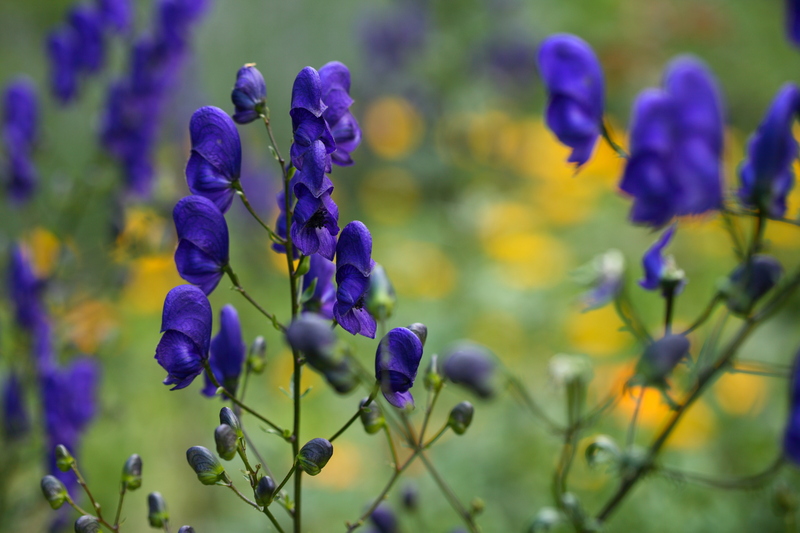Green Thumb Secrets: Lawn Care Essentials Every New Homeowner Should Know
Buying a new home is an exciting milestone--one that comes with not just a roof over your head, but often a patch of green that sets the stage for countless memories. Whether you're envisioning backyard barbecues, children's games, or quiet evenings under the stars, a healthy, lush lawn is the foundation of outdoor enjoyment. Yet for many new homeowners, lawn care remains a mysterious endeavor. If you dream of a thriving yard but aren't sure where to start, these lawn care essentials are your gateway to cultivating that picture-perfect green space.
Why Lawn Care Matters for New Homeowners
Your lawn is not just cosmetic--it's an investment. A well-maintained lawn boosts curb appeal, increases property value, and offers environmental benefits such as erosion control and temperature regulation. Understanding primary lawn maintenance techniques from the start can preserve your turf's health, prevent future headaches, and even save money down the line.

First Steps: Assess Your Lawn's Current State
Before you break out the mower or invest in fertilizer, take time to inspect your yard. New homes, whether recently constructed or pre-owned, often come with unknown lawn histories.
- Identify your grass type: Is it cool-season (like fescue or bluegrass) or warm-season (like Bermuda or zoysia)? Each has unique needs.
- Check soil quality: Compacted or nutrient-poor soil can hinder healthy grass growth.
- Look for problem areas: Bare patches, weeds, excessive thatch, or signs of disease or pest damage.
Soil Testing: The Secret Ingredient
Soil tests are often overlooked but can make a world of difference. Most garden centers offer affordable soil test kits. Testing reveals pH and key nutrient levels, guiding your choice of fertilizer and treatments.
- Acidic soils may need lime, while alkaline soils could benefit from sulfur-based amendments.
- Nutrient deficiencies (like nitrogen, phosphorus, or potassium) can be addressed with targeted fertilizers.
Mowing: The Cornerstone of Lawn Care
Proper mowing isn't just about aesthetics; it directly influences turf health. Many new homeowners make the mistake of cutting grass too short. The golden rule: never remove more than one-third of the grass blade in a single mowing. This maintains deep roots and helps block weeds.
- Blade height matters: In general, set the mower higher in summer to prevent drought-stress.
- Sharpen mower blades regularly to ensure clean cuts--not tears--that minimize disease risk.
- Alternate mowing patterns to prevent soil compaction and rutting.
Grasscycling: Healthy & Eco-Friendly
Instead of bagging clippings, let them decompose on the lawn. This returns valuable nutrients to the soil, reducing fertilizer needs.
Watering Wisely: Quality Over Quantity
Overwatering is a common pitfall. It encourages shallow roots and leaves grass susceptible to disease. Instead, water deeply but less frequently--this promotes deep root growth and turf resilience.
- Ideal timing: Water early in the morning to minimize evaporation and fungal issues.
- Soil type impacts frequency: Sandy soils dry out faster; clay soils retain moisture longer.
- Lawns typically need about 1 inch of water per week (from rain or irrigation combined).
Irrigation System Tips
Check your sprinkler heads for proper coverage--uneven watering leads to brown spots. Invest in a rain gauge or soil moisture meter for precision.
Fertilizing Fundamentals
Feeding your grass promotes lush, vibrant growth, but too much fertilizer is just as problematic as too little. Base fertilization schedules on grass type and season.
- Cool-season grasses: Fertilize primarily in fall and spring.
- Warm-season grasses: Feed in late spring and summer.
- Slow-release formulations are safer and provide steady nutrition.
Organic vs. Synthetic Fertilizers
Organic fertilizers (compost, manure, plant-based) release nutrients slowly, improve soil structure, and are environmentally friendly. Synthetic fertilizers act quickly but risk over-fertilization if not used carefully. Choose what suits your goals, but always follow label instructions.
Weed Management Strategies
Weeds compete for water, light, and nutrients--and can quickly mar a beautiful lawn. Best practice? Prevent weeds through thick, healthy turf, which naturally crowds them out.
- Manual removal: Ideal for small patches or persistent weeds like dandelions.
- Mulch and lawn edging: Use these to block weed seeds in garden beds and borders.
- Pre-emergent herbicides: Apply in early spring to stop weeds before they sprout (follow label guidance).
- Post-emergent herbicides: Spot-treat established weeds; minimize chemical use where possible.
Cultural Controls for Weed Suppression
Mow high, overseed thin spots, and water deeply--these cultural practices keep grass dense, reducing the space available for weeds to establish.
Pest and Disease Vigilance
Healthy lawns resist most pests and diseases. *Yet even the greenest thumb can face the occasional setback.* Regularly inspect your yard for signs of trouble, such as brown patches, chewed blades, or wilting.
- Grubs: White beetle larvae that feed on roots, causing dead spots.
- Chinch bugs, armyworms, and sod webworms are common surface feeders.
- Fungal diseases: Look for unusual spots, rings, or powdery growths--often exacerbated by overwatering or poor drainage.
Integrated Pest Management (IPM) combines monitoring, cultural practices, and targeted treatments to minimize chemical use and safeguard beneficial insects.
Core Aeration & Thatch Control
Over time, lawns may develop thick layers of thatch--a mat of dead grass and roots--or suffer from compacted soil, both of which impede water and nutrient movement.
- Aeration involves removing small plugs of soil, enhancing oxygen flow, and encouraging deeper root systems. Best performed in spring or fall.
- Dethatching (using a rake or dethatching machine) is necessary if your thatch layer exceeds 1/2 inch.
Regular aerating and dethatching rejuvenate older lawns, making them more receptive to overseeding and fertilization.
Overseeding: Refreshing Your Lawn's Look
If your lawn is thin, patchy, or has suffered from drought or disease, overseeding is an effective way to restore density and improve resilience.
- Choose grass seed blends tailored to your climate and lawn type.
- Prep the soil: Mow low, rake aggressively, and--if possible--aerate before seeding.
- Water consistently until new grass is established--avoid letting the soil dry out.
Pro Tip:
Overseed cool-season lawns in early fall, and warm-season lawns in late spring to maximize germination and growth.
Common Lawn Care Mistakes New Homeowners Make
- Watering too often or at the wrong times, causing disease.
- Cutting grass too short, resulting in weak, sparse turf.
- Misjudging fertilizer needs--leading to nutrient deficiencies or excess.
- Ignoring soil quality and skipping soil tests.
- Delaying pest and weed management until issues become severe.
Seasonal Lawn Care Checklist
Spring
- Rake away debris and gently dethatch if needed.
- Soil test and amend as necessary.
- Overseed thin areas and fertilize cool-season lawns.
- Apply pre-emergent herbicide for weeds.
- Aerate established turf.
Summer
- Raise mowing height to shade roots.
- Water deeply, early in the day.
- Watch for pests and diseases--address quickly.
- Fertilize warm-season grasses.
Fall
- Core aerate and overseed cool-season lawns.
- Fertilize cool-season grasses for winter resilience.
- Rake leaves promptly.
- Spot treat weeds and repair bare patches.
Winter
- Minimize foot traffic on dormant grass.
- Clear debris and store lawn equipment properly.
- Plan improvements for the upcoming season.
Eco-Friendly Lawn Care Practices Every Homeowner Should Know
Adopting sustainable methods is good for your pocket and the planet. Here's how to create an environmentally friendly yard:
- Choose native grass species--they require less water and fewer chemicals.
- Compost yard waste and leave autumn leaves in garden beds as mulch.
- Limit pesticide and fertilizer use: Apply only when and where necessary.
- Conserve water using smart irrigation systems or rain barrels.
- Plant trees and shrubs that offer shade, biodiversity, and erosion control.

Tools & Supplies: Building Your Green Thumb Arsenal
Quality equipment makes every lawn care task easier and more effective.
- Adjustable lawn mower
- Edger or string trimmer
- Pest and weed removal tools
- Soil testing kit
- A sprinkler or hose with spray attachment
- Garden rake, dethatcher, and aerator (rental options available)
- A spreader for seed and fertilizer
- Work gloves for personal protection
*Well-maintained tools* make the lawn care process smoother and yield better results.
Conclusion: Your Green Thumb Journey Begins
Taking pride in your lawn pays off--literally and figuratively. Mastering lawn care essentials does not require years of experience, just the willingness to learn and a schedule tailored to your yard's specific needs. Start with these green thumb secrets to nurture a healthy, vibrant lawn that enhances your new home's beauty for years to come.
Remember: A thriving lawn is a result of consistent care, smart practices, and a little patience. Before you know it, your yard will be the envy of the neighborhood--and you'll be the proud owner of a truly "green" thumb.